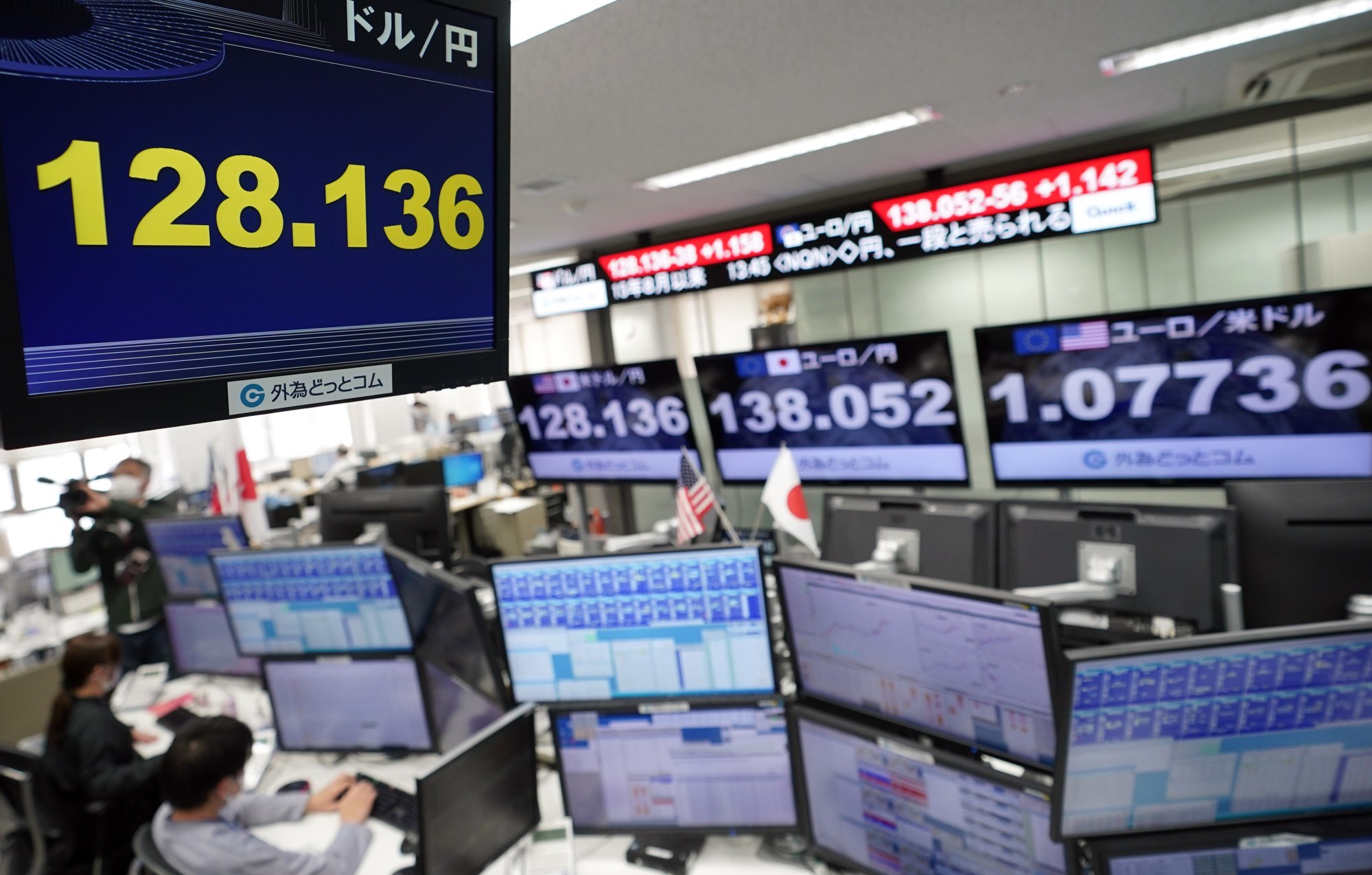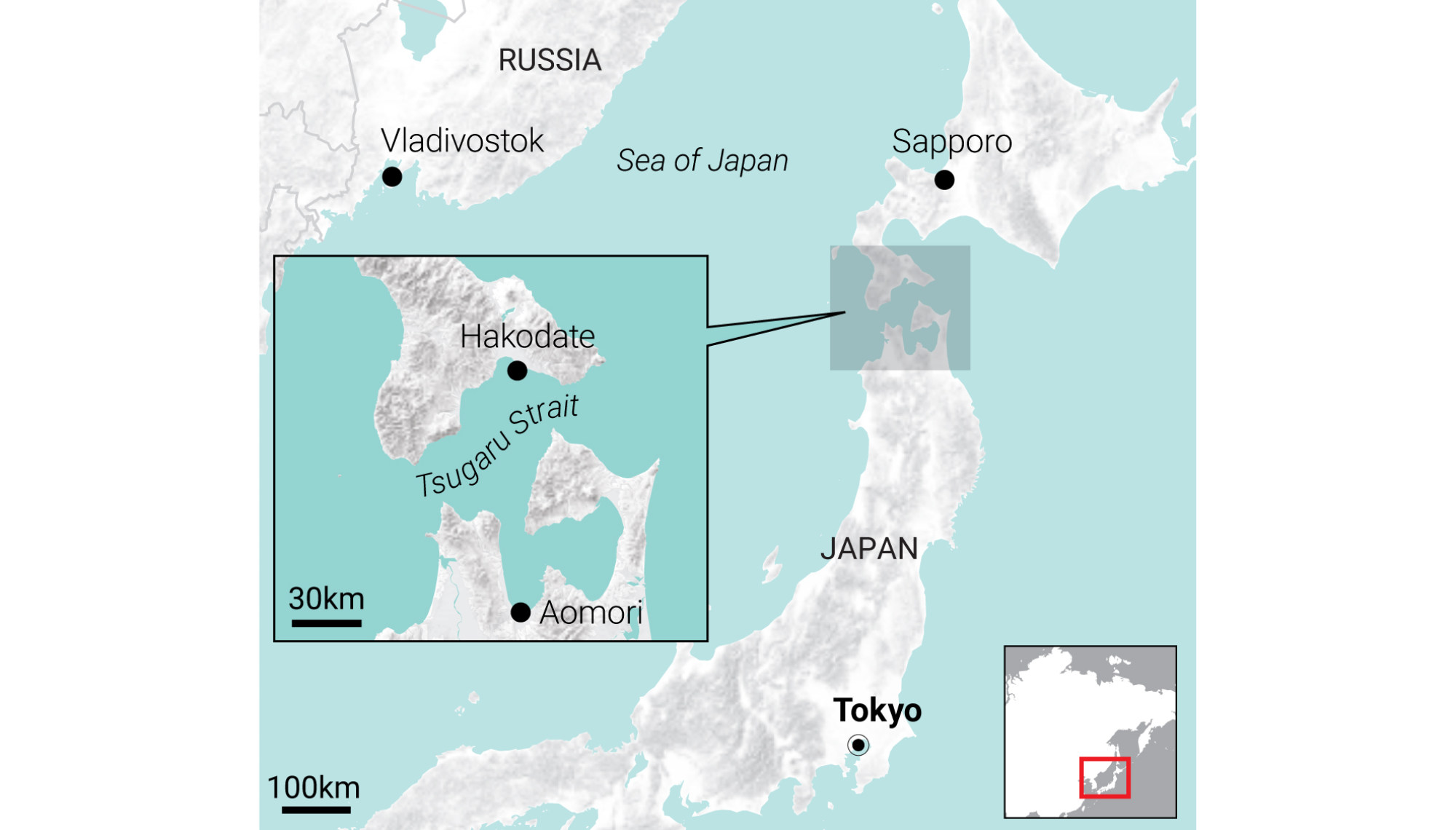
How Japan’s Ukraine war stance could backfire on its currency and economy
- Japan is paying the price of its tough stance against Russia as it faces a weakening yen and rising tensions with Moscow over the disputed Northern Territories
- Add to this a yawning trade deficit and reluctance to tighten monetary policy, and Japan could see the yen lose value even further
The Japanese yen plunged to a 20-year low of 129 to the US dollar last week, amid a widening gap in interest rates between Japan and the United States. Japan is the only Group of Seven country to stick to a loose monetary policy in the face of high global inflation.
The Bank of Japan holds almost half of all Japanese government bonds, almost 80 per cent of exchange traded funds, and 7 per cent of Japanese listed stocks. It also keeps interest rates near zero to maintain a flat yield curve on 10-year bonds. Tightening monetary policy would therefore negatively affect both government bonds and the stock market at once, potentially throwing Japan’s economy into turmoil.
For 30 years, the yen has triumphed as a safe haven currency because of Japan’s consistently neutral position and net foreign assets of US$2.7 trillion, the world’s largest.
Although Japan has relied on the US for 100 per cent of its security since 1951, it has been free to establish and maintain peaceful relationships with all countries, including US rivals like Iran, China and Russia.
The imperative for lasting world peace is enshrined in Japan’s constitution; Japanese schools have conducted peace education since the end of World War II. No foreign country or terrorist organisation has attacked Japan on home soil since it regained its sovereignty in 1952.
This peace policy has allowed Japan to ramp up its foreign investment, including in high-risk countries such as Iran, Syria and Yemen, offering a high return on investment.
It is surprising then, that rather than being bought in the wake of the Ukraine crisis, the yen has been systematically sold.

However, there are multiple international communities across the world. Kishida refers only to the one led by the US. Thirty-five countries, including those with close relationships with Japan like India and Vietnam, abstained from a UN resolution condemning Russia in February, while five countries vetoed it.
At the same time, China announced an almost 30 per cent increase in trade with Russia in the first quarter of 2022. India also published a plan in March to increase trade with Russia to US$30 billion by 2025 from US$8 billion in 2021. Turkey, a member of Nato, almost doubled its imports from Russia in March compared to a year earlier.
The Russian rouble now sits at around 75 per dollar, higher than just before the invasion of Ukraine. On April 23, Russia declared a military victory in the Ukrainian port city of Mariupol, and has now shifted its focus to Odesa in the south, another vital trading city. Biden’s hawk-like eye must see we are facing a very different world today than we were two months ago.
Should Putin ultimately survive Biden’s sanctions, Japan would be the worse off for it.

Russia could easily decouple Hokkaido from the rest of Japan, costing Japan 3.6 per cent of its gross domestic product. Russia has already announced plans to nationalise assets of foreign firms that leave the country. This may include its Sakhalin oil and natural gas projects, which are crucial to Japan’s energy security.
The yen has appreciated greatly since 1985, when it was 240 to the US dollar. Japan’s national debt has also increased from US$180 billion to US$11.3 trillion. Unfortunately, Japanese industries do not have the same exporting power as they did 40 years ago, leaving the country with a trade deficit of US$3.26 billion as of March, the second biggest on record.
Between the Bank of Japan’s massive easing and the potential loss of its external assets, Japan faces a big dilemma. It would not be unreasonable to forecast the return of the 240 yen-dollar exchange rate soon.
Yoshihiro Sakai is a professor at Chubu University, Japan. This article reflects the author’s own views


